One Orange Strip 1964
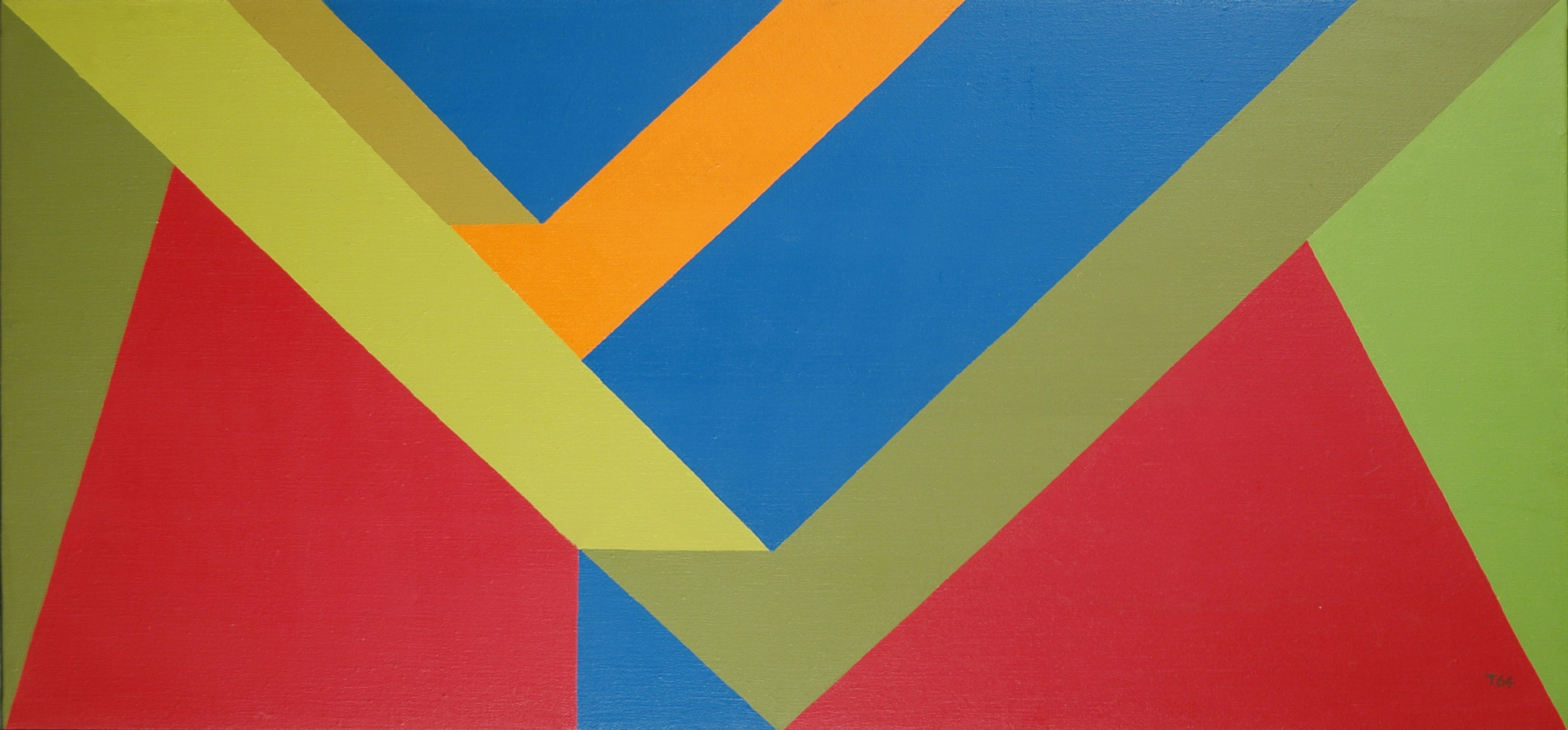
Takao Tanabe, One Orange Strip, 1964
Acrylic on canvas, 40.8 x 86.4 cm
Museum London
This work reveals the significant contribution Tanabe has made to the story of abstraction in Canada. The palette, composition, and spirit of the work are unmistakably of the period and undeniably his own. One Orange Strip is remarkably vivid in its use of colour, but our reading of the space is conflicted. Though we know that the work is flat, spatial depth is also suggested. The single strip of the title is one of the smaller elements of the composition, but it is a perfect complement to the blues that surround it. An abrupt visual truncation of the V-shapes, in both the orange/green and the two green vectors, surprises the eye and animates the whole work. The flatness of the surface is also contradicted by the two large red elements—the left one seems to retreat and the right one advance, suggesting a torquing of the whole image. The boldness of the orange leaps out from the blues around it, giving the illusion of space.
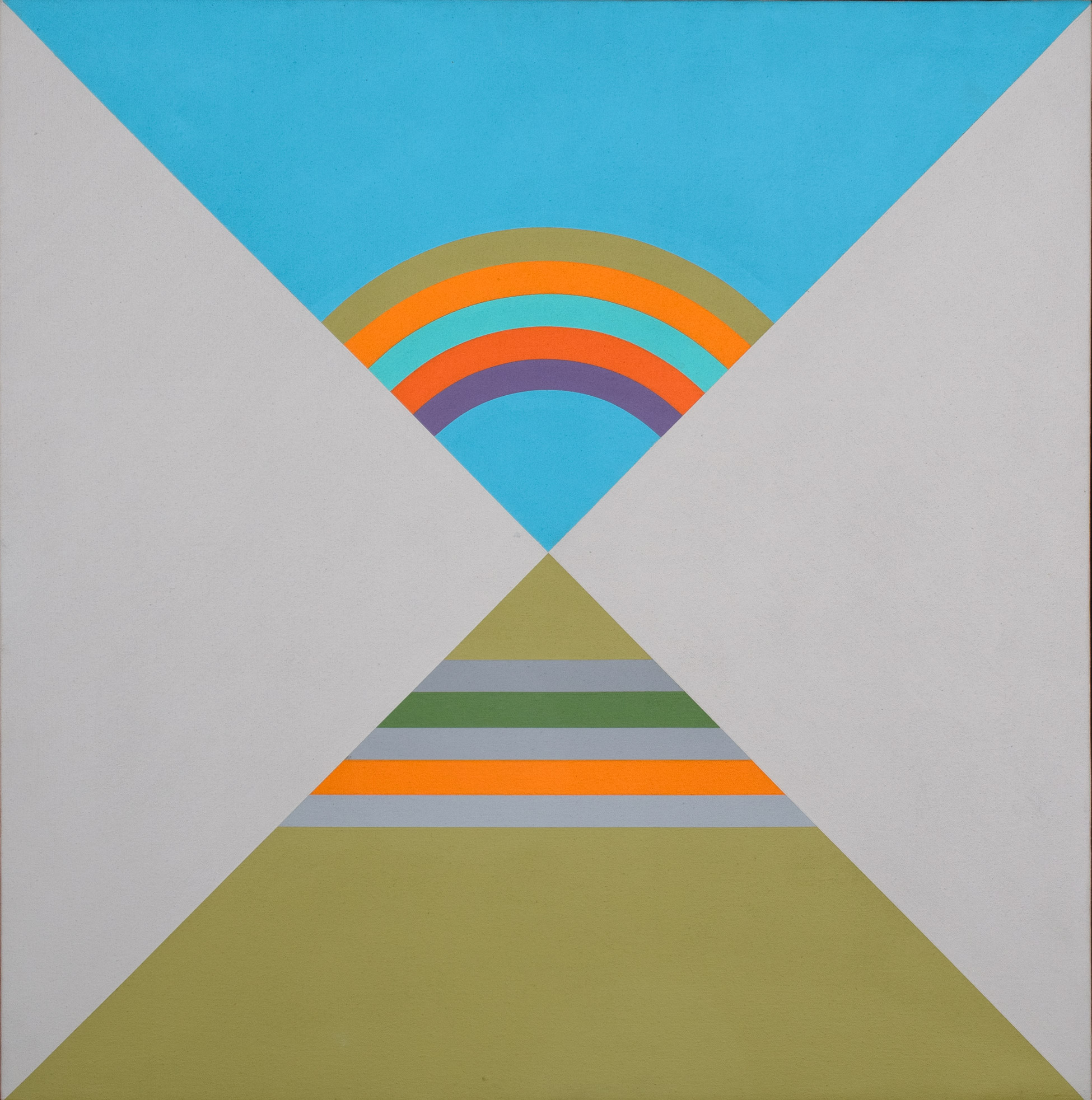
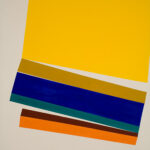
Curator and art historian Roald Nasgaard states that Tanabe “devoted himself to geometry and colour” in the 1960s, as did many other abstract artists in Canada—especially Montreal-based painters such as Guido Molinari (1933–2004) and Yves Gaucher (1934–2000)—and in the United States. But Nasgaard suggests that Tanabe did so idiosyncratically, “with an irreverence” toward the prevailing trends at home and abroad. Under the influence of American critic Clement Greenberg (1909–1994), who championed a formal approach to painting throughout the decade, many abstract artists valued line, colour, texture, and composition over narrative or other contextual elements, as Tanabe also appears to do in One Orange Strip. However, Nasgaard reminds us that for Tanabe, “formalist purity was never the issue, perhaps because [he] always has been an image maker, dedicated to the narrative possibilities of what happens inside the frame and within the enigmatic space of illusion.”
During this period, Tanabe was painting in a manner that was absolutely current, but he clearly wanted to define the work as distinctive. Although there are certainly affinities with the work of Jack Bush (1909–1977), William Perehudoff (1918–2013), and others, Tanabe’s geometry is, as Nasgaard has noted, “eccentric” and illustrates the disparate ways Canadian artists took up abstraction in the mid-1960s. Tanabe’s eccentricity is rooted in his composition, which suggests “illusions of inward space and outward projection.” This is clearly seen in One Orange Strip. Along with hard edges, the “colours turned high-keyed and commercial and were laid down flat and unmodulated,” a testament, perhaps, to Tanabe’s early interest in sign painting.
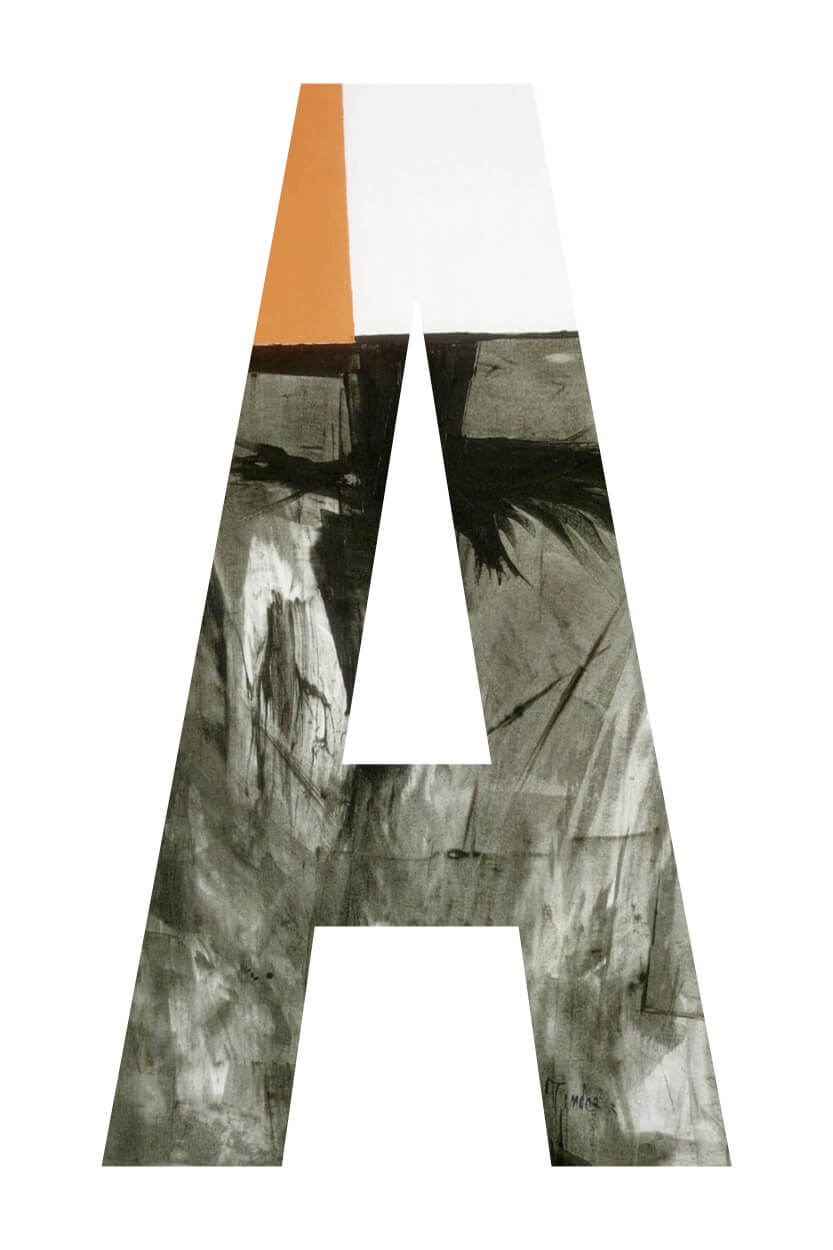
 About the Author
About the Author
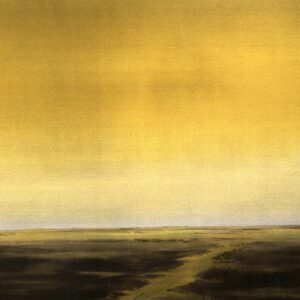 More Online Art Books
More Online Art Books
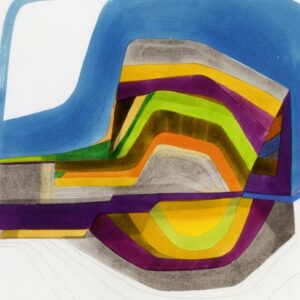 Acknowledgements
Acknowledgements